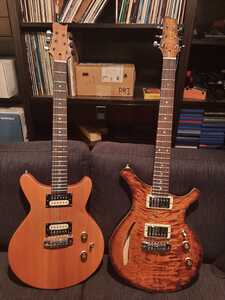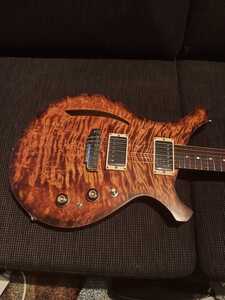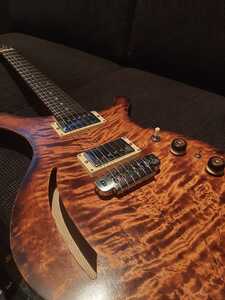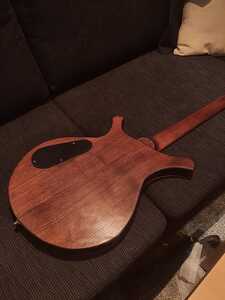This one took time and gave me some headaches along the way. I had to sand back the first try with waterbased laquer, because I sanded througt and ruined the stain. So now it is Danish oil instead, exept for the headplate. After assembly and soldering all the electrical stuff, the darn thing was terribly muted and muddy sounding. Re-soldered almost everything and changed the pots, in case those were damaged. But it still wasn't sounding right. I got really strange resistance readings from the pickups so I almost gave up. But I finally found the fault. I had painted the control cavity and the hole for the output jack with graphite paint and the "hot" lug touched the wall, just a tiny bit, enough to make a little resistance bridge. Not a full short, some current made its way to the amplifier.
The top is a piece of curly birch, cut down about 100 years ago and the body is european ash. The neck is made of something called Bosse Cedar. I made a weight relief cavity and tried to make a faux binding. It looks alright from a distance at least... 😉 My first build made it to one of the pictures too.
How does it sound in comparison with your solid body guitar?
Thanks!
Without amplification I would say they sound about the same. Maybe the solid one has a tad more sustain. The solid one has a brighter sound plugged in, but they have pickups of different make and model. (Gibson PAF vs. Wilkinson affordable). Pots and capacitors have the same nominal specs in both guitars. In #2 i have a parallell/series switch for the neck pickup, which is nice.
Beautiful piece of wood there, and the finishing certainly does it justice.
And great to see an "F-hole" that doesn't look like it's come from an seventeenth century violin 😉
(I much prefer the more modern design on the more modern instrument!).
Online guitar making courses – guitarmaking.co.uk







